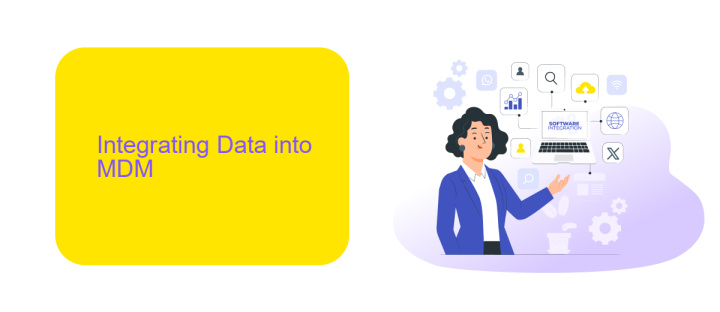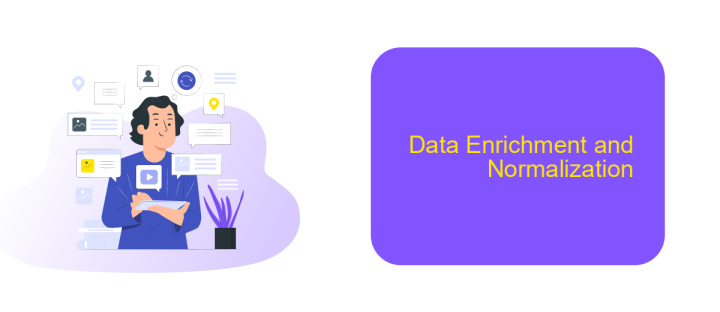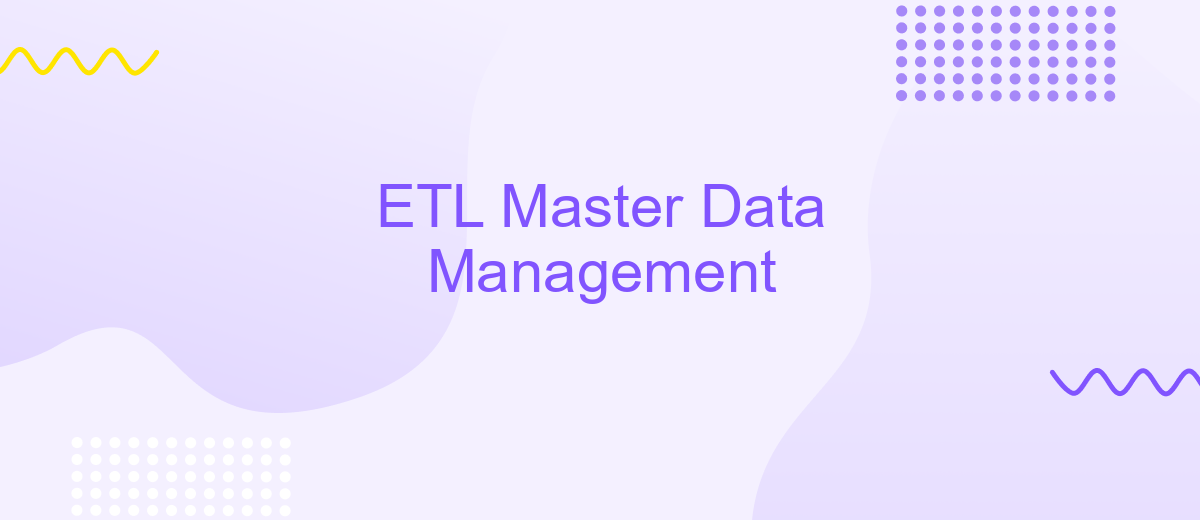ETL Master Data Management
Master Data Management (MDM) is a crucial aspect of modern data-driven enterprises, ensuring the consistency and accuracy of key business information. ETL (Extract, Transform, Load) processes play a vital role in MDM by integrating data from various sources, transforming it into a standardized format, and loading it into a central repository. This article explores the synergy between ETL and MDM, highlighting best practices and key benefits.
Introduction to ETL and MDM
ETL (Extract, Transform, Load) and Master Data Management (MDM) are critical components in the data management landscape. ETL processes involve extracting data from various sources, transforming it into a suitable format, and loading it into a data warehouse or other storage systems. MDM, on the other hand, focuses on ensuring the consistency and accuracy of the organization's master data.
- Extract: Gathering data from different sources.
- Transform: Converting data into a usable format.
- Load: Storing the transformed data in a target system.
- Consistency: Ensuring data uniformity across the organization.
- Accuracy: Maintaining high-quality and reliable data.
Integrating ETL and MDM processes can be streamlined using tools like ApiX-Drive, which automates data transfers between systems, ensuring seamless integration. By leveraging such services, organizations can achieve more efficient data management, reduce errors, and maintain a single source of truth for their master data.
Integrating Data into MDM

Integrating data into Master Data Management (MDM) systems involves consolidating data from various sources to create a single, accurate view of critical business information. This process ensures data consistency, accuracy, and accessibility across the organization. Key steps in data integration include data extraction, transformation, and loading (ETL). During extraction, data is collected from diverse sources such as databases, applications, and external systems. The transformation phase involves cleaning, validating, and harmonizing data to ensure it meets predefined standards. Finally, the loading phase involves importing the transformed data into the MDM system.
To streamline the integration process, organizations can leverage integration platforms like ApiX-Drive. ApiX-Drive simplifies the connection between different data sources and the MDM system, automating data flows and reducing manual intervention. By using such platforms, businesses can ensure real-time data synchronization, minimize errors, and enhance overall data quality. This seamless integration is crucial for maintaining an up-to-date and reliable master data repository, which supports informed decision-making and operational efficiency.
Data Validation and Transformation

Data validation and transformation are critical steps in the ETL process to ensure the accuracy, consistency, and reliability of master data. Validation involves checking the data for errors, inconsistencies, and compliance with predefined rules before it is loaded into the target system. Transformation, on the other hand, involves converting data from its source format into a format suitable for analysis and reporting.
- Identify and define validation rules based on business requirements and data standards.
- Implement automated validation checks to detect and correct errors in real-time.
- Utilize transformation techniques such as normalization, aggregation, and data enrichment to ensure data is in the desired format.
- Leverage integration services like ApiX-Drive to streamline data validation and transformation processes across various data sources.
- Continuously monitor and refine validation and transformation rules to adapt to changing business needs.
By implementing robust data validation and transformation strategies, organizations can enhance the quality of their master data, leading to more informed decision-making and improved operational efficiency. Utilizing tools like ApiX-Drive can further facilitate seamless integration and automation, ensuring that data is consistently validated and transformed as it flows through the ETL pipeline.
Data Enrichment and Normalization

Data enrichment and normalization are critical steps in the ETL process, ensuring that master data is accurate, complete, and useful. Data enrichment involves augmenting the existing data with additional information from external sources, enhancing its value and relevance. This step can include adding geographic data, demographic details, or behavioral insights, which provide a more comprehensive view of the dataset.
Normalization, on the other hand, focuses on standardizing data formats and structures to eliminate inconsistencies and redundancies. This process ensures that data from different sources can be integrated seamlessly, facilitating accurate analysis and reporting. By applying normalization techniques, organizations can maintain data integrity and improve the efficiency of their data management systems.
- Standardize data formats and structures
- Eliminate inconsistencies and redundancies
- Integrate data from diverse sources
- Enhance data with additional information
- Improve data accuracy and completeness
Using tools like ApiX-Drive can streamline the integration and enrichment processes by automating the data flow between various systems. ApiX-Drive facilitates seamless data integration, ensuring that enriched and normalized data is consistently updated and accessible for analysis. This results in a more efficient ETL process and better decision-making.
Governance and Data Quality
Effective governance and data quality are essential components of any ETL Master Data Management (MDM) strategy. Governance involves establishing policies, procedures, and standards to ensure that data is accurate, consistent, and secure. This includes defining roles and responsibilities, setting data quality metrics, and implementing compliance measures. By having a robust governance framework, organizations can maintain control over their data assets, ensuring that the information is reliable and fit for decision-making.
To achieve high data quality, it is crucial to integrate various data sources seamlessly. Tools like ApiX-Drive can facilitate this process by automating data integration and synchronization across different platforms. ApiX-Drive offers a user-friendly interface and customizable workflows, making it easier to manage data flow and maintain data integrity. By leveraging such services, organizations can enhance their data quality, reduce manual errors, and ensure that their MDM initiatives are both efficient and effective.
FAQ
What is ETL in the context of Master Data Management (MDM)?
How does ETL improve data quality in MDM?
What are the key components of an ETL process in MDM?
How can automation tools like ApiX-Drive facilitate ETL processes in MDM?
What challenges might one face when implementing ETL for MDM?
Apix-Drive is a simple and efficient system connector that will help you automate routine tasks and optimize business processes. You can save time and money, direct these resources to more important purposes. Test ApiX-Drive and make sure that this tool will relieve your employees and after 5 minutes of settings your business will start working faster.

